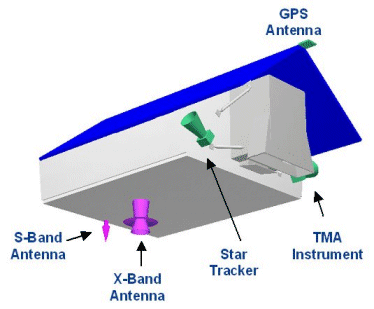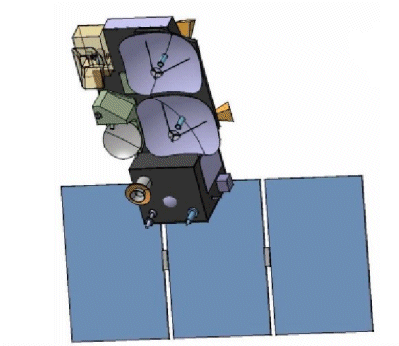Sentinel Family Definition Studies
The objective of the studies for the Sentinel 1, 2 and 3 families is the detailed definition of the satellite, its requirements on the ground segment and the operations concept based on the requirements for an operational GMES system as defined in cooperation with users and other GMES stakeholders. The studies are split into two parts as follows:
Part 1 which will culminate in a System Requirement Review for each mission
- Part 2 which will include sub-system specification and preliminary design so as to reach the level of a Preliminary Design Review
The individual mission studies will not address ground segment architectures but will stop at the level of operation concepts and requirements on ground segment operations. These will then be taken into consideration within the parallel dedicated ground segment design and implementation activities.
The design for each Sentinel family will take into account the requirements for operational use, including recurring procurement. In addition, each study shall consider further implications of operational use including:
Maximum reuse of the strong heritage acquires from existing systems so as to minimse new developments, HW procurement and operations costs
- Identification of required developments to support operational exploitation of each Sentinel and an optimised approach for their implementation
The studies will also consider issues such as commonalities across the various families especially considering this need to produce recurring units. In addition, it is intended to generate firm cost estimates for the implementation phase of the relevant Sentinel. These will be provided as separate estimates for the first satellite and recurrent satellites in each Sentinel Family.
By the time of the PDR the system design shall have reached a level of definition compatible with the start of the implementation phase.

Sentinel-1 C-band SAR
The Sentinel-1 series of satellites will address the issue of data continuity for SAR data at large. The immediate priority is to ensure such continuity for C-band data. Under the current scenario, provision of ENVISAT data to feed SAR-based services is likely to cease in the 2008-2010 timeframe. In order to meet the need for continuity, and taking into account the availability of Radarsat-2, the first Sentinel 1 satellite should be launched before the end of the Envisat operations.
The experience with ERS, Envisat and Radarsat constitutes the basis for the Sentinel-1 mission requirements and concept.

Sentinel-2 Superspectral
Numerous services of high strategic important and economic value are currently being provided based on data from the SPOT or Landsat series of satellites. The lifetime of SPOT-5 and Landsat is coming to an end. It is necessary to provide continuity and thus guarantee the availability of data to service providers and users. Enhancement as required by the growing user demand for higher service quality shall be considered. Action has to be started urgently as recognised also by ESA and EC, including the recent communication to European Parliament on Establishing a GMES Capacity by 2008.In addition, activities related to the accommodation of the IR sensor on Sentinel 2 will be added during the second part of the definition study.

Sentinel-3 Ocean
This mission, devoted to provision of operational oceanographic services has been baselined within GMES. It shall provide on an operational basis, data in support of services that have been developed since 1991 with ERS, and ENVISAT. The altimeter part of the mission will further complement that of Jason and others to contribute to a worldwide operational oceanographic service. Taking into account the global context and in particular the European needs, capabilities and plans, the Sentinel 3 should include first the elements which, being well defined and already exploited on a near operational basis, have no guaranteed operational continuity beyond ENVISAT. These elements are the high inclination altimeter and the visible-infrared element for ocean colour and sea-surface temperature based products.
In addition, activities related to the accommodation of the IR sensor on Sentinel 3 will be added during the second part of the definition study.
Sentinel-4/-5 Atmospheric Chemistry
Two pre-definition studies are to be conducted in parallel, one for Sentinel 4 and one for Sentinel 5.
The “EC’s White Paper on Space (COM(2003)673 identifies atmospheric monitoring as an area of high priority for GMES including real time services related to atmospheric chemistry, pollution, ozone and aerosols. The GMES Final Report of the Initial Period (annex to ESA/PB-EO(2004)18) restates the priorities and identifies the notional capabilities required.
ESA has identified two notional elements, the so-called Sentinel -4 and Sentinel -5, to meet these requirements. Sentinels -4 and -5 would be space-based systems operating from geostationary (GEO) and low Earth orbit (LEO) respectively.
Mission definition activities were initiated such as the “CAPACITY” study to identify the capabilities to be deployed. It is now necessary to define the system concepts for these Sentinels. Urgent action is required in the recent communication of the EC to the European Parliament on GMES (COM(2004)65) on Establishing a GMES Capacity by 2008.
The starting point is an analysis of the requirements as established mainly in IGACO theme and in the “CAPACITY” study which in turn builds in GMES, DUE and EUMETSAT related activities, the requirements derived from the need to monitor the implementation of the Montreal and Kyoto protocols, and the requirements of the Global Atmospheric Watch. Observation techniques and associated sensor concepts will be analysed. Requirements will be allocated to GEO and LEO systems and to the candidate techniques, e.g. nadir versus limb sounding, emission or absorption, etc. The spectral regions will be identified. Candidate concepts will be established and subject to trade-off. Maturity of the technology, reliability of the underlying science and experience in the user community will be criteria for selection of a baseline. The baseline will be defined in detail as required to establish consistent Mission and System Requirements and candidate system concepts.






